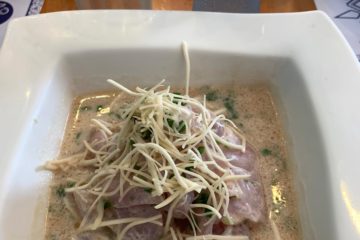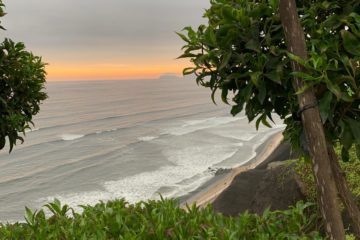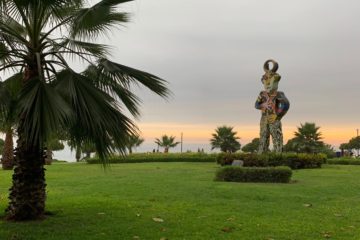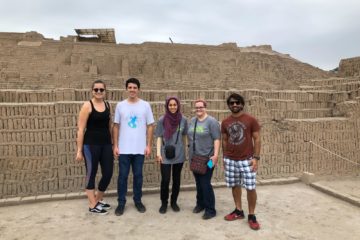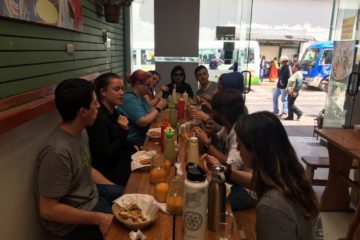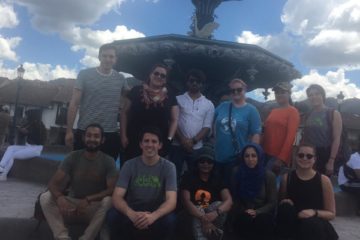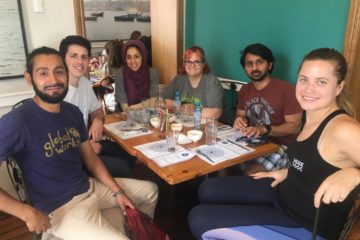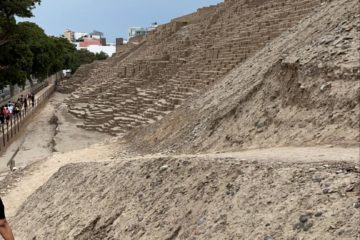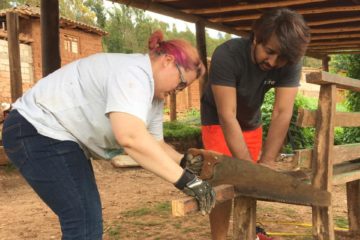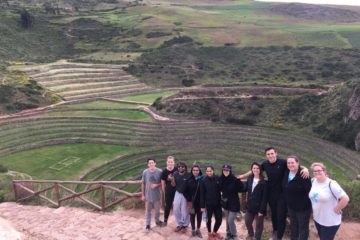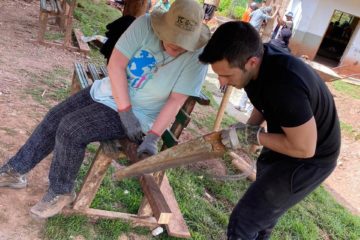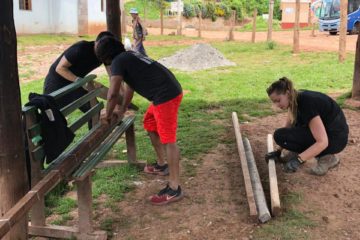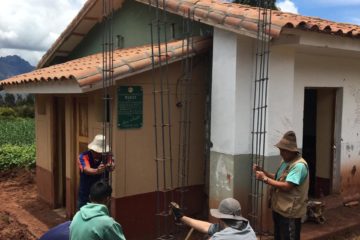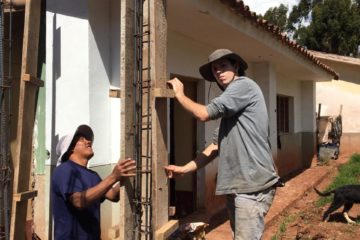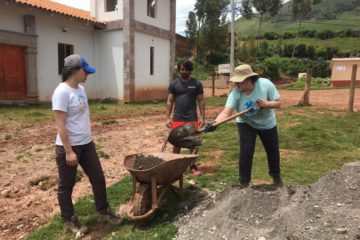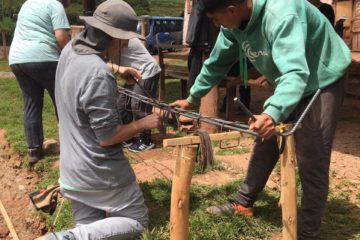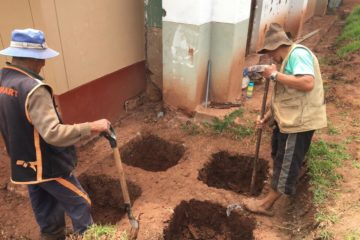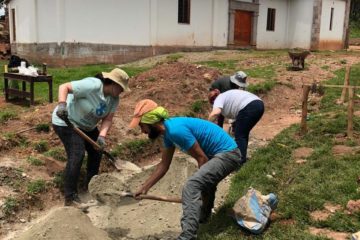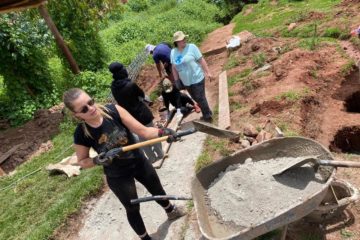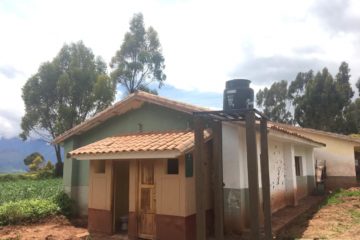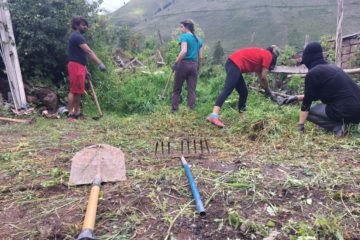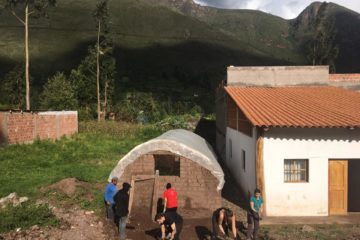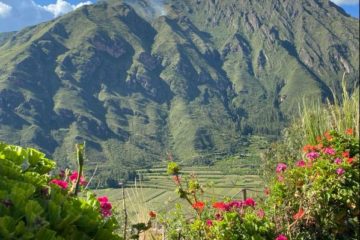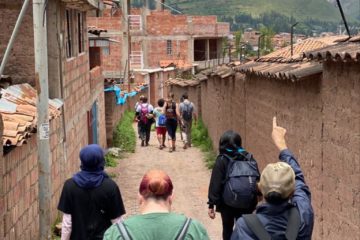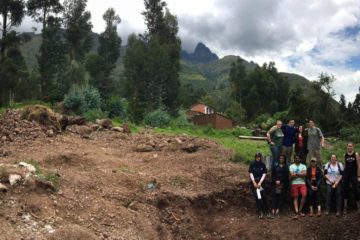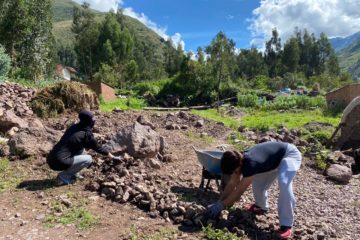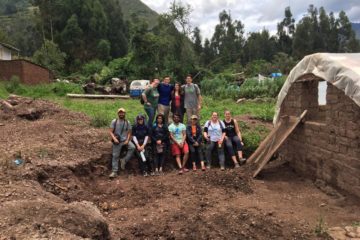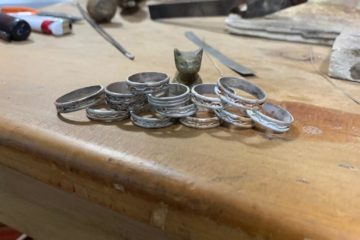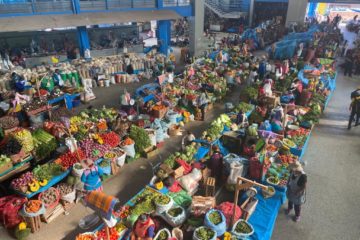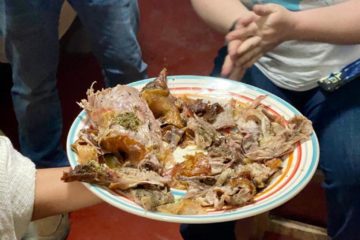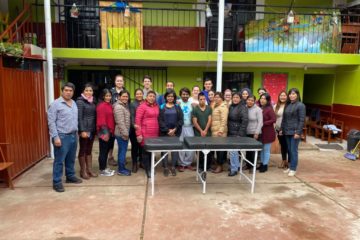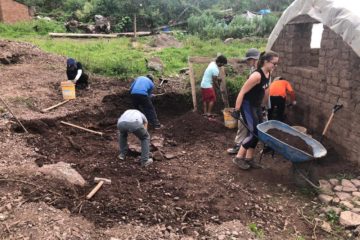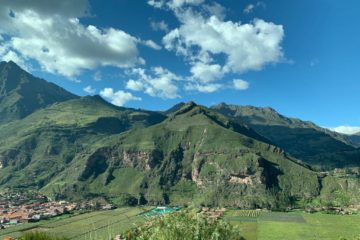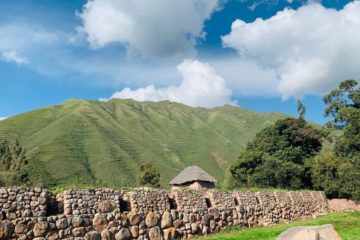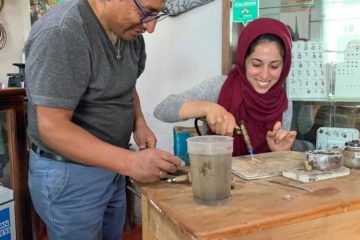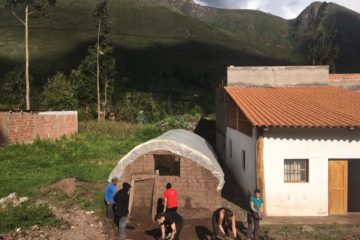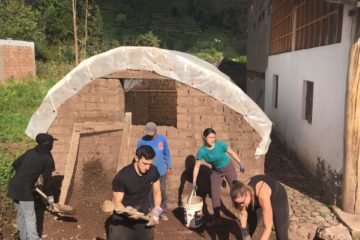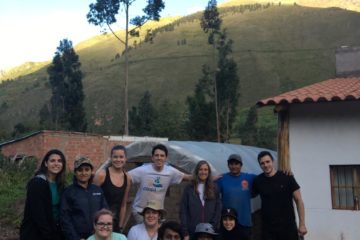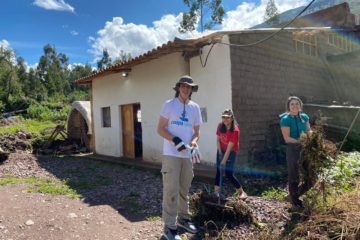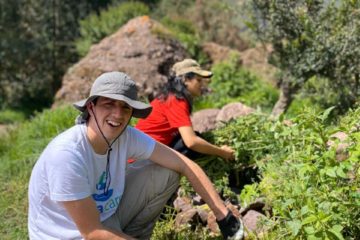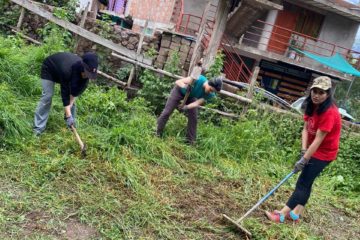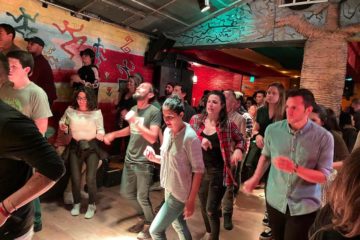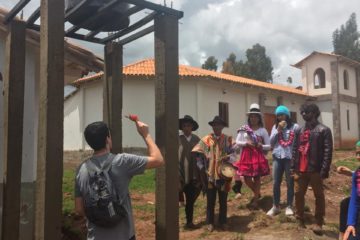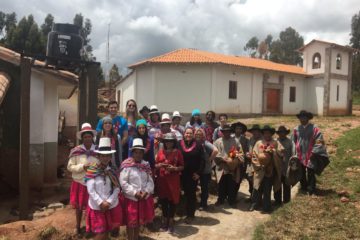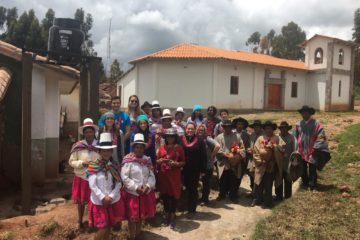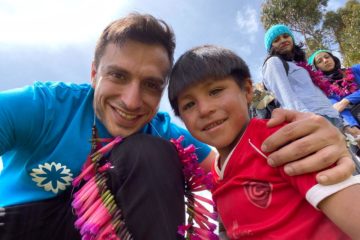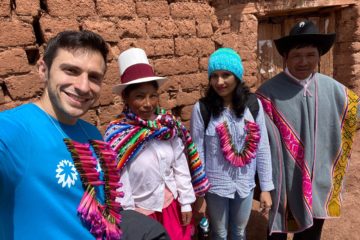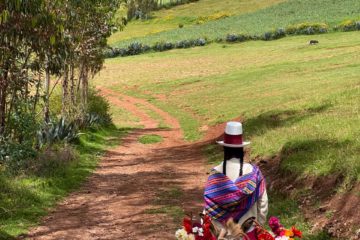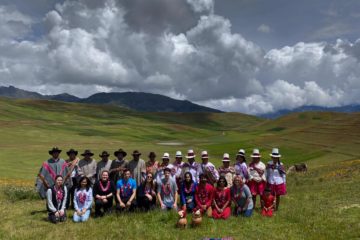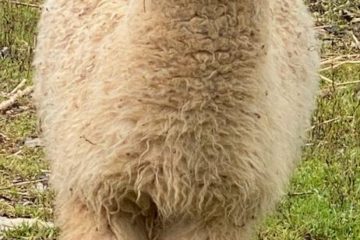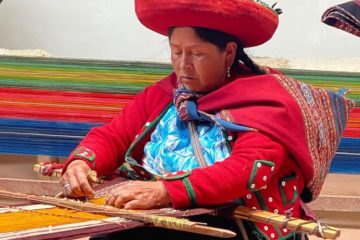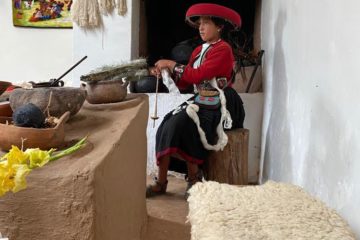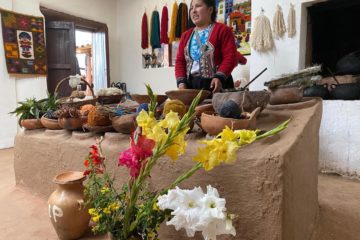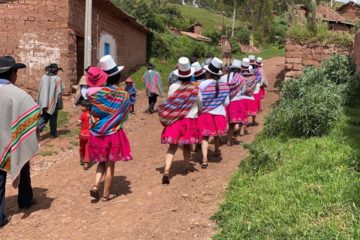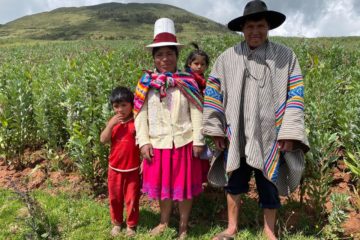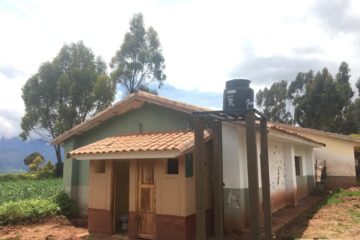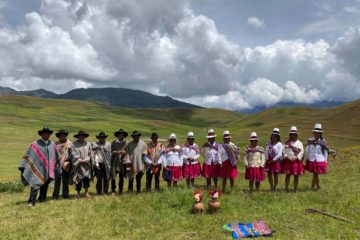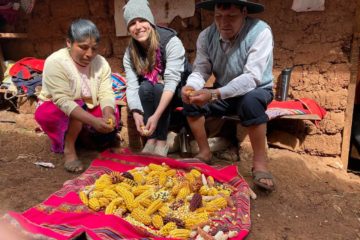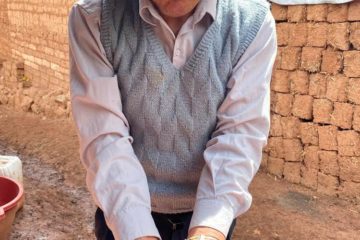COUPA Software- Peru
March 1, 2020
A group of us landed in Lima in the early morning. After we settled into our cozy hotel, Fabricio took us out for lunch to eat some local Peruvian food. We all got to try ceviche! It was a delicious marinade of fish with lime and citrus juices.
Afterwards, we all went to Huaca Pucllana- a historic archeological site of a religious temple. We were amazed how big it was and the view we saw on top of the pyramid.
Finally, we went to the Oceanside and watched the beautiful sunset. We are excited for the adventures to come!
March 2, 2020
Today was the first time our whole Coupa team met over coffee and cereal. Some of us tackled introductions right off the bat, while some of us remained a little more hesitant. As introductions rolled on throughout the rest of the day, it was interesting to learn how vastly different we all are in terms of lifestyle, location, and religion. Yet regardless of how different who we are and our backgrounds may be, we have all joined here in Peru with a common purpose, and from this purpose, we are able to find commonalities and build stronger Coupanionaships as well.
Aside from getting to know our team members, we had the opportunities to immerse ourselves in Peruvian history and lifestyles:
1. As a group we flew from Lima to Cuzco
2. Drove through the Salcantay mountain ranges of Cuzco to the Sacred Valley (the heart of the Inca Empire)
○ Visited a couple of the Plaza de Armas where we were able to make our first interactions with the indigenous people.
○ Drove by a couple of archaeological sites including the stone walls of the late Inca Empire. (Fun Fact: Each stone often weighed more than 70 tons, creating a mystery of how these stones were transported to Cuzco.)
3. Invited into a local Peruvian family home for dinner in Calca.
Throughout our travels, we had group discussions with our Global Works leader to understand the current economic/political/social position of Peru. One of the most notable things shared is the pay-gap between the working class and the higher class (17 times pay-gap). Part of the large pay gap is due to the restricted access of resources for education. Women, more importantly, are not given education after primary school to then work 3-4 part-time jobs/day just to make the necessary funds to provide for their family. Women with families located outside of a main city-center, often have further limitations to provide for their loved-ones. The first couple of days we will be working with the Sacred Valley Project, who specifically aim to improve the feasibility of receiving an education for indigenous women. Aware of the lengths these women and families go through just to obtain a secure education, we are excited to help this program in any ways that are needed!
March 3, 2020
Coupa literally broke ground today. Today we started our work on the Sacred Valley Project. Our day consisted of cutting/pulling weeds, moving rocks and soil from one area to another, and learning more from the director of the Sacred Valley Project about what they wish to achieve.
Our team is helping to build better living conditions for when the Sacred Valley Project students are living in the dormitories. The Sacred Valley project wants to have greenhouses and gardens built, and we needed to move fresh soil over to the appropriate area. Also, there were weeds that grew in the area so those needed to be cut or pulled first. Where the weeds were, they intend to plant a lush garden.
We were told by Gabriella that the Sacred Valley Project exists because of no access to secondary schooling for many young women in the district of Calca due to no proximity to a secondary school, limited transportation, and the family’s apprehension to sending the girls to school. For some perspective, some girls must walk over 13 hours one way to arrive at the closest high school. Self-sustaining dormitories are needed to resolve this issue in Peru including greenhouses and full kitchens for the girls to have a comfortable time during their studies. In terms of donations, the sacred valley project accepts donations in the form of time and money, and Gabriella mentioned that the time we spent there today is highly valued by her team. The dormitories house 55+ girls annually and enable them to create generational change in their communities through more access to education.
We were shown a video of an in depth look at the Sacred Valley Project. We highly recommend all to view it to understand more about the impact we are helping to realize.
Link to video: https://youtu.be/orOR19skueQ
Among other activities, we enjoyed locally grown exotic fruits during a break, we had a delicious lunch in an intimate setting inside a local family’s home, and we spent time together working today.
Overall, we laughed, realized our impact, and were shown the challenges of the local girls who live in indigenous regions that are unable to attend high school. Our team has begun bonding quite well and we are looking forward to our next few days of service work in Peru!!!
March 4, 2020
After another delicious breakfast, we started off the morning by visiting a school for students with disabilities. The school mostly takes students from ages 0-20. We then gathered around and opened the donated massage bed. The teachers were very appreciative because they had been doing massages for the students on tables or the floor before this. Now, not only were they receiving equipment, but they were also hiring more teachers (from recent government funding) who studied physiotherapy treatment and could focus on fewer students at a time. Before, one teacher was teaching 26 students and they had to use their own money to take courses on physiotherapy treatment to learn how to do it. Below is a picture of the teachers and the director of the school, along with one of the students! It was a very touching experience to see how others work very hard to serve the needs of those who are unable to help themselves.
After the visit, we went to the sacred valley site to continue working on the garden and the building for the last day. We were able to clear most the backyard for the garden, dig more into the ground for the new building, and move tons and tons of rock. It was a great experience working in such a beautiful landscape along with everyone who was motivated to work hard in order to improve the school for the girls.
Then, we traveled to Urubamba and, after eating a delicious lunch, we spent time at the local Peruvian market to gain experience with the Peruvian culture. It was full of things like fresh vegetables, nuts, and meat. Just nearby, we saw an Inca archeological site. Also, we participated in a silver workshop (Peru has the best quality of silver!). Global Works has been working with the owner of the silver shop for over 15 years. The silver workshop was a great experience because it shows Global Works’ commitment within the local community and this workshop truly demonstrated a durable, long lasting friendship. And of course, to further exemplify this relationship, they made us a Peruvian delicacy after the workshop- roasted guinea pig!
March 5, 2020
It was a beautiful morning in Urubamba. The team was excited to meet the indigenous community in Kajllariakay. The community is located at around 3700 meters. The community had toilets but without water since the water runs only for half an hour a day. The idea was to build a water tank that sits on concrete columns which would provide storage and continuous supply of water.
We split into small groups. Some of us cut some wood to built the concrete columns, made metal frames, and did concrete mixing.
At the end of the work we realized the power of humanity. The families came together and showed a lot of interest in the project. They liked to communicate with us. We were very grateful to get such an opportunity.
After that, we got a chance to visit the Morray ruins. They were majestic in between the mountains. And we were lucky to find a rainbow. It looked beautiful. The ruins were architecturally constructed in such a way that it internally creates a greenhouse effect and makes the temperature vary at different levels. There are 22 levels in the structure and temperature varies from 7 to 15 degree Celsius. The ruins are a religious place where members of the community would worship the mountain, sun and water.
At the end of the day after dinner, the group got together and revisited all the special moments at a bonfire in our hotel. We shared how we collaborated as a team. As a part of Coupa village, we focused on results to ensure the success of this Andean community.
March 6, 2020
And today, after 3 intense days of hard work, we started to say goodbye to this amazing country. In the morning we left the hotel in Urubamba towards the community in Kajllariakay (ka-ear-ak-hi), where the indigenous families, benefiting from the water tank structure we helped to built yesterday, were excited waiting for us.
They had finished the columns, and we could see this part of the project finished.
They were dressed up on their traditional clothes, and offered us a lovely floral necklace as a gift.
We were then divided into 5 groups of 2 and went with the families to visit their homes and learn more about their day-to-day routine. It was a very thoughtful experience, where we could all learn what they do for living. We helped them with the corn. They showed us the many different grains they cultivate, their animals and also brought us to the plantation site.
The group got back together with the other families and the community members then invited us to join them on a traditional ritual to thank the Mother Nature “Pachamama” for the food and life. We followed them uphill, while they sang local musics and played instruments, to a site with a stunning view surrounded by the mountains.
It was such an intense moment to be able to participate in the ritual and witness their very close and special connection with the nature. They offered Coca leafs and Chicha (a fermented drink made out of germinated corn) to the mountains as a gratitude gesture.
After the ritual, we said goodbye and headed to Chinchero community, where we learned about the ancient and traditional tapestry art. The ladies of the community, dressed up in a traditional attire, showed us from scratch the different types of wool (sheep, llama, alpaca) and how they produce the strings, how they dye the wool with natural plants, and how they knit it to produce the typical tapestries and clothes.
We also had a chance to see the llamas and baby alpacas (so cute).
We then drove back to Cusco, where we left the luggage at the hotel and went for lunch in the main plaza. After lunch, we visited the Inka Museum where Fabricio, our guide, explained the history of the Inka empire. It has been a busy and intense day, so we headed back to the hotel and prepared for dinner. During dinner, we reflected about the last days, remembering the funny, intense and special moments of the trip. After that the group celebrated the conclusion of the trip with salsa classes.
It has been such a privilege to be part of this amazing group and have contributed to make the lives of these communities a bit better. As per the ritual, we leave a part of us here in Peru, and we also bring with us a bit of them in our hearts.
In Quechua (kay-chu-ah) language, they do not say good bye, instead they say “see you around”. So, we say “TUPANANCHIS KAMA” Peru!

